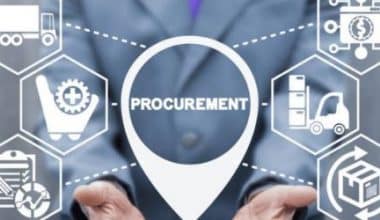MICROBUSINESS: Definition, Types, & Tips to Get Started
What Is a Microbusiness?
A microbusiness, also referred to as a microenterprise, is a small company with limited staff. Additionally, a microenterprise is typically started with a small amount of capital advanced from a bank or other organization and employs fewer than 10 people. The majority of microbusinesses focus on offering goods or services to their immediate communities.
Note that:
- Microbusinesses are frequently supported by inexpensive startup loans.
- Microcredit, a form of credit available to those without collateral or credit history, is used to finance them.
- Microbusinesses typically provide goods or services that are required in the community, which has improved the standard of living for individuals in developing nations.
What Is Considered a Microbusiness?
Microbusinesses are small businesses that are financed by microcredit, a small loan available to people with no collateral, credit history, savings, or employment history. Additionally, they serve a vital purpose in improving the quality of life for people in developing countries, providing a product or service in their communities, and adding value to the local economy.
Furthermore, microfinance helps microbusinesses by lending small amounts of capital, allowing individuals or families with moderate, low, or no income to start their businesses and earn income. Banks and nonprofit organizations provide microloans, which require repayment with interest.
Microenterprises and microfinance were developed in the USA in the late 1970s to provide people in need with financial and economic support.
How Microbusinesses Grow
Since microenterprises are small, it is assumed that they won’t expand without an aggressive strategy in place. On busy street corners, a vendor, for instance, might operate a cart to prepare and sell gyros. Therefore, scaling the business up like a fast-food franchise is difficult unless the vendor has the funds to employ others who can complete the same task consistently and the assets to buy more carts.
Microbusinesses may not have the cash flow to grow and have limited access to financial advisors and expertise, but they can expand by acquiring numerous similar businesses and fusing them into a bigger business. This might entail paying off rivals who have staked out a different region.
Types of Micro Businesses
#1. Freelancers:
Over the past few years, this subset of microbusinesses has expanded at an astronomical rate. These microbusinesses include Uber drivers, the majority of hairstylists, virtual assistants, freelancers from Fiverr and Upwork, social media influencers, writers, etc.
#2. Brick-and-mortar
Any business with fewer than 10 employees that operates in a customer-facing setting falls under the brick-and-mortar subcategory. This can include places like dry cleaners, tailors, hair salons, and barbershops, in addition to local convenience stores.
#3. eCommerce:
The microbusiness category encompasses a large number of small eCommerce businesses (such as Etsy sellers). This is because most only employ a small number of people to assist with manufacturing, shipping, and other tasks like packaging.
What Are the Examples of Micro-Enterprises?
A few business models are categorized as microenterprises, including
- Cart vendors
- Mechanics
- Grocers
- Internet Services
- Plumbers
- Accountants
- Home-based enterprises
- Consultants
- Independent artists
- Distributors
- Shoemakers
- Landscape Maintenance
- Hair Salons
- Maker of small toys
- Bakeries
- Lawn care and landscaping businesses.
- Carpenters.
- street hawkers.
- autonomous mechanics.
- Shoemakers.
- Plumbers.
- Farmers.
- operators of machine shops.
What Are the Benefits of a Micro Business?
The following are just a few advantages that microbusinesses have for their owners, communities, and the economy:
#1. It promotes economic expansion:
Microbusinesses establish cooperative relationships with their neighborhood by giving back to the community and using the resources that are given to them. For instance, a business might purchase supplies from a nearby grocery store, boosting the store’s revenue and bringing money back into the microbusiness.
#2. It leads to more autonomy:
Microbusinesses allow individuals to have financial freedom over their projects, as microloans are easier to obtain due to lower qualification requirements. Additionally, this allows business owners to withdraw a loan to form a company, allowing them to focus on creativity and productivity.
#3. Job creation:
Microbusinesses create jobs in their local area and online communities by hiring employees for business projects or services. Additionally, they can also create jobs in online communities, as many companies choose to start online.
#4. Being able to adapt:
Microbusinesses have fewer employees, use smaller loans to start up, have less debt to pay off, and have fewer employees to manage, making it easier for them to adapt to the changing economic environment. Additionally, microbusinesses have more flexibility. After all, they typically earn less money than large businesses, which is advantageous because they lose less money in times of economic hardship.
#5. Customer relationship:
Microbusinesses have fewer employees and are owned and operated by a single employee, allowing customers to directly address their comments or concerns to the head of the business.
What Is the Federal Definition of Microbusiness?
A company that has a very small staff is known as a microbusiness. Additionally, a microbusiness is an organization with no more than nine employees, including the business owner, according to the U.S. Small Business Administration (SBA).
What Are the Features of a Micro Business?
The issue of unemployment is resolved by micro-enterprises, particularly in regions with low-income generations. They make it simple for unemployed people to launch small businesses.
Using microenterprise funding, it is possible to produce goods closer to home for less money. By increasing income and putting money in the hands of the poor in economically underdeveloped areas, they increase purchasing power.
These modest organizations support a nation’s long-term growth. They support the establishment of regionally focused local businesses that serve their immediate surroundings, reducing the need for excessive transportation and encouraging the use of regional resources, particularly human resources.
Microbusinesses aid in the economic growth of rural areas and the integration of towns and villages.
Microbusinesses are established and run in the same manner as major corporations. They not only create jobs but also provide jobs in rural areas that help stop labor from migrating to Urban areas. Microbusinesses contribute to a more equitable distribution of the nation’s income, giving the poor more purchasing power.
What Distinguishes a Microbusiness From Other Small Businesses?
- Less than $3000 in investments are required for microbusinesses. On the other hand, small businesses require investments of up to $5000.
- Small businesses are defined as having annual revenues of less than $50 billion and micro businesses as having annual revenues of less than $5 billion.
- If a company employs less than 1,500 people, it is referred to as a “small business.” However, a microbusiness is considerably less significant than that. More than ten percent of microbusinesses employ fewer than ten people.
- Small businesses have significantly less brand equity than micro firms, and micro businesses have none unless they expand.
What Is the Difference Between Micro and Small Enterprises?
Although the terms “small business” and “microbusiness” are frequently used interchangeably, microbusinesses are a subset of small businesses. A business with fewer than 500 staff members is typically considered a small business. Additionally, a company is typically considered a microbusiness if it employs fewer than nine people. Therefore, that means that while all small businesses are not microbusinesses, all microbusinesses are small businesses.
Examples of Microbusiness ideas
#1. Start a dropshipping business:
Dropshipping is an easy, low-cost, business idea to start. It is a fulfillment model where third-party suppliers store and ship inventory to customers on your behalf. With Shopify, it is easy to start a dropshipping business and start selling without the hassle of managing inventory, packaging, or shipping.
Furthermore, you can curate products from one or more suppliers into your online store under a specific niche, but you are still responsible for your own marketing and customer service. Note that it is a great way to test product-market fit and launch a business before investing in your original products.
#2. Design and sell print-on-demand t-shirts:
Print-on-demand is a dropshipping model that puts inventory, shipping, and fulfillment in the hands of a third-party supplier. It focuses on customizing products with your designs to create something original. Additionally, you can find a designer to work with using freelance sites. The base price per unit is more expensive, but the advantage is that if a design doesn’t sell, you haven’t paid for the item yet.
#3. Launch your own:
A book is a great small business idea to start, as it provides control over the quality and look of the book. Print-on-demand is a safe way to test the waters and get started with self-publishing, and can be done through Lulu xPress and Blurb. Pre-selling or crowdfunding your book idea can ensure demand and guarantee a certain number of sales. Therefore, launching your book can be a great way to monetize a blog.
#4. Create digital products or online courses:
Digital products like music, courses, podcasts, and templates are low-investment small-business ideas that don’t require manufacturing or shipping costs. Additionally, to make a good digital product, you need to figure out what is useful enough to pay for. Shopify has a free Digital Downloads app to offer digital products in your store.
#5. Sell print-on-demand posters and greeting cards:
Dropshipping with a print-on-demand business model is a great way to let others own a piece of your work. Low-cost digital templates and mockup generators like Placeit can be used to showcase your products without having to print out each item and conduct photo shoots.
#6. Sell a service
Offering services is a lucrative way to gain self-employment, as it requires limited time and skills that are in demand. Furthermore, it can be expanded with physical or digital goods to create additional revenue streams. Note that joining a service-based business with products can give you another source of income that isn’t time-consuming.
#7. Create an online fashion store:
Create an online fashion boutique using dropshipping and Shopify’s tools and free resources to build, launch, and grow your business. Build your brand using product-sourcing apps, model them on your own, and build an online following.
#8. Sell handcrafted and homemade goods:
Makers have a unique position to find a small business idea, as product development and procurement are in their hands. They can start simple on a per-order basis or with a small batch until they start generating consistent sales. Be mindful of any regulations in your product category.
#9. Build an audience you can monetize:
The ability to capture and keep the attention of others is an asset that many businesses are willing to pay for and can be converted into a business with multiple revenue streams. To monetize an audience, you can use sponsored posts, become an influencer, sell physical or digital products, or a combination of the above.
#10. Start a pet business:
All different types of small-business opportunities are abundant in the pet industry. There is a lot of demand, and the sector is worth more than $100 billion. You could sell accessories, food, or toys in your pet store or provide services like grooming, walking, or training.
Types of Microbusiness Loans
#1. Term loans:
Term loans, one of the most popular kinds of small business loans, consist of a lump sum of money that you pay back over a predetermined time. Typically, the fixed monthly payments will also include interest on top of the principal balance. Additionally, a term loan gives you the freedom to use it for a range of requirements, including equipment and recurring costs.
#2. SBA loans:
Small Business Administration (SBA) loans are enticing for company owners looking for low-cost government-backed loans. On the other hand, the arduous SBA loan application procedure is notorious for delaying funding. The time between receiving the loan and its approval may be three months. SBA loans could be a good choice if you want to take advantage of lower interest rates and fees while not needing money right away.
#3. Business lines of credit:
Business lines of credit provide borrowers with a revolving credit limit that they can access through a checking account. Additionally, they are great for those who don’t know the exact amount of money they need, as they only incur interest charges on the amount they withdraw. Note that many business lines of credit are unsecured, meaning no collateral is needed.
#4. Equipment loans:
Consider taking out an equipment loan if you need to finance expensive equipment purchases but lack the necessary funds. These loans are made to assist you in paying for pricey machinery, vehicles, or equipment that has value over time, like computers or furniture. Note that the equipment you buy will typically be used as collateral if you are unable to repay the loan.
#5. Invoice factoring and invoice financing:
Invoice factoring and invoice financing are two options for business owners who struggle to receive on-time payments. Factoring gives the company buying the invoices control over collecting payments, while financing still requires them to collect payments. Additionally, factoring gives the company control over collecting payments, while financing requires them to collect payments.
#6. Commercial real estate loans:
You can finance new or existing real estate, such as an office, warehouse, or retail space, with the aid of commercial real estate loans (also known as commercial mortgages). Additionally, these loans function as term loans and might let you refinance an existing loan, buy new commercial real estate, or expand your business.
#7. Microloans:
Microloans are small loans that can provide $50,000 or less in funding. They can be offered through nonprofits or the government but may require collateral such as business equipment, real estate, or personal assets.
#8. Merchant cash advances:
Merchant cash advances require you to borrow against future sales and repay them with credit card sales or bank transfers. They come with high-interest rates and use credit card sales as collateral, unlike invoice financing/factoring. Furthermore, unlike invoice financing or factoring, they use credit card sales as collateral.
#9. Franchise loans:
Franchise loans can provide the money to pay the upfront fee for opening a franchise, and some franchisors may offer funding to new franchisees. This can help you reach your goal of business ownership faster.
Types of Microbusiness Grant
Microbusiness grants come in a variety of forms and are offered by the government and other organizations. The following is a list of the most typical grant types:
#1. SBA Grants:
Several grant programs are available from the Small Business Administration (SBA) to help small businesses. The 7(a) loan program, which offers financial assistance to microbusinesses that can’t obtain financing from conventional sources, is the most well-known SBA grant program.
#2. State and Local Grants:
Grant-supporting programs for small businesses are provided by numerous state and local governments. Additionally, these programs frequently offer funding for predetermined initiatives, like equipment purchases or business expansion.
#3. Federal Grants:
Numerous grant programs are available from the federal government to help small businesses. The Small Business Innovation Research (SBIR) program, which finances R&D initiatives, is the most well-known federal grant program.
#4. Private Grants:
Numerous private organizations provide small businesses with grant programs. These programs frequently offer funding for predetermined initiatives, like equipment purchases or business expansion.
#5. Foundation Grants:
Private organizations known as foundations finance charitable causes. Microbusiness grant programs are provided by some foundations. These programs frequently offer funding for predetermined initiatives, like equipment purchases or business expansion.
How to Obtain a Microbusiness License in New York
To obtain a microbusiness license in New York, you must be a small business with ten or fewer employees and annual gross receipts of $500,000 or less.
- Register your business with the New York State Department of State and fill out the microbusiness license application.
- Apply along with the required documents and fees to the New York State Department of Taxation and Finance.
- Wait for approval and renew your license before it expires.
Note that you should consult with a qualified professional or government agency for guidance and assistance.
Tips to Start Microbusiness
You can follow these actions to get closer to your objectives for your microbusiness:
Step 1: Set up a vision and mission statement.
Mission and vision statements are the foundation of a business, providing a strong foundation for plans and making them attractive to customers and investors. Note that without a clear mission and vision statement, the company will not be able to grow.
Step 2: Develop comprehensive plans for your company’s operations.
You should consider the following queries:
- Who are my main suppliers and partners?
- Where does my small company operate?
- What materials do I require, and what are their costs?
- What is the structure of my company?
- How will I meet the needs of my target customers, and who are they?
- What are the costs and sources of my income?
Step 3: Assess your financial situation.
Create a projected balance sheet, income statement, and cash flow statement in an itemized list, even though these topics were covered in general in the previous step. Remember that when pitching to lenders and outside investors, having a carefully thought-out financial plan will help.
Step 4: Create a marketing strategy.
Microbusinesses require a strong marketing strategy to understand their customers and provide the most value. This can be done through online marketing campaigns such as social media advertising, email marketing, Google ads, and content marketing/SEO.
Step 5: Research and evaluate your goods and services.
Prototyping is a strategy used to understand how to improve the customer experience. Examples include surveys, templates, pre-launched websites, offers, cold-calling vendors, and potential customers. Note that when people say no, it is a good opportunity to request feedback.
Step 6: Register your LLC and get started!
The final step is to file your business with the government, but consider filing through a business filing service to avoid missing any important steps.
Common Uses for Business Microloans
MICRO BUSINESS VS. SMALL BUSINESS: What is the Difference?
MICRO LENDING: What It Is, How It Works & Best Lenders






